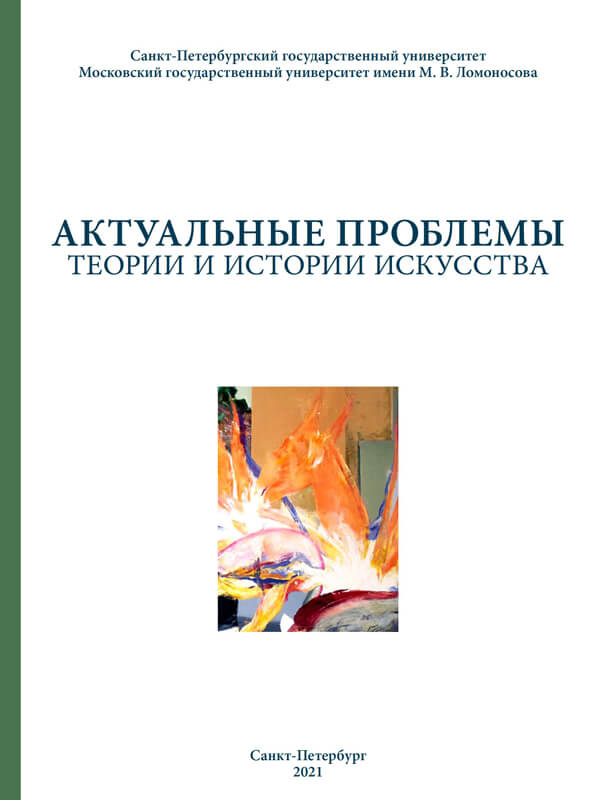Visual Rhetoric in the English Renaissance Portrait. Contexts and Interpretations
DOI:
https://doi.org/10.18688/aa2111-06-51Keywords:
English Renaissance, visual, rhetoric, social context, visual culture, image theory, portraiture, gesture, pose, emblemeAbstract
Numerous studies on the English Renaissance have been devoted to the uniqueness and peculiarity of the English portraiture. Such means of visual representation as gesture, pose, costume, as well as ways to enhance the personality of a model through the adding of emblems and inscriptions became widespread during this period. All these elements can be considered as pictorial rhetorical formulas with fixed meanings. Among them, there are complex allegorical solutions, “talking” gestures, or allegorical background. Moreover, these and other examples appear simultaneously with the growing interest to individual interpretations of the portrait image, which indicates a certain stage in development of the English portrait.
There is an approach based on the visual rhetorics concept among contemporary methods of art studies. It proposes that images can be analyzed as rhetorical structures. The paper offers a brief historiographic overview of the appearance of this approach and its application to English Renaissance painting. The aim of this study has been to define the visual rhetorics as an art-historical concept, and to demonstrate how the analysis of visual rhetorics tools became the key to the understanding of the 16th-century English art. The concept of visual rhetorics outlines the differences and similarities in the approaches to the English Renaissance art research. At the same time, it analyzes various artistic portraiture techniques of this time emphasizing the originality of the composition.
References
Barthes R. Rhétorique de l’image. Communications, 1964, no. 4, pp. 40–51 (in French).
Berger H. J. Fictions of the Pose. Facing the Gaze of Early Modern Portraiture. Representations, 1994, no. 46, pp. 87–120.
Bryson A. The Rhetoric of Status: Gesture, Demeanour and the Image of the Gentleman in Sixteenth-and Seventeenth-Century England. Gent L.; Llewellyn N. (eds.). Renaissance Bodies. The Human Figure in English Culture C. 1540–1660. London, Reaktion Books Publ., 1990. pp. 136–153.
Camden W. Remains Concerning Britain: Their Languages, Names, Surnames, Allusions, Anagramms, Armories, Moneys, Impresses, Apparel, Artillerie, Wise Speeches, Proverbs, Poesies, Epitaphs. London, Print. For Charles Harper and John Amery Publ., 1674. 586 p.
Cooper T.; Bunstock A.; Howard M.; Town E. (eds.). Painting in Britain 1500–1630. Production, Influences, and Patronage. Oxford, Oxford University Press Publ., 2015. 420 p.
Faraday Ch. “It seemeth to be the thing itsefe”: Directness and Intimacy in Nicholas Hilliard’s Portrait Miniatures. Études Épistémè, 36, 2019. DOI: 10.4000/episteme.5292
Fumerton P. “Secret” Arts: Elizabethan Miniatures and Sonnets. Representations, 1986, no. 15, pp. 57–97.
Gent L.; Llewellyn N. (eds.). Renaissance Bodies. The Human Figure in English Culture C. 1540–1660. London, Reaktion Books Publ., 1990. 294 p.
Greenblatt S. Renaissance Self-Fashioning: From More to Shakespeare. Chicago, The University of Chicago Press Publ., 1980. 321 p.
Hazard M. E. Elizabethan Silent Language. Lincoln, University of Nebraska Press Publ., 2000. 345 p.
Kampka A. Retoryka wizualna. Perspektywy i pytania. Forum Artis Rhetoricae, 2011, no. 1 (24), pp. 7–23 (in Polish).
Kantorowicz E. H. The King’s Two Bodies: A Study in Mediaeval Political Theology. Princeton, Princeton University Press Publ., 1957. 568 p.
Mazur N. N. Visual Culture Studies: History and Prehistory. Mir obrazov. Obrazy mira. Antologiia issledovanii vizual’noi kul’tury (The World of Images. Images of the World. Anthology of Visual Culture Studies). St. Petersburg, Moscow, Novoe Izdatel’stvo Publ., 2018, pp. 4–15 (in Russian).
Mazur N. N. Abi Warburg (1866–1929). Mir obrazov. Obrazy mira. Antologiia issledovanii vizual’noi kul’tury (The World of Images. Images of the World. Anthology of Visual Culture Studies). St. Petersburg, Moscow, Novoe Izdatel’stvo Publ., 2018, pp. 19–22 (in Russian).
Meltzoff S. On the Rhetoric of Vision. Leonardo, 1970, vol. 3, no. 1, pp. 27–38.
Mitchell W. J. T. What Do Pictures Want? The Lives and Loves of Images. Chicago, University of Chicago Press Publ., 2005. 380 p.
Nesterov A. V. Koleso fortuny. Reprezentatsiia cheloveka i mira v angliiskoi kul’ture nachala Novogo veka (Wheel of Fortune. Representation of Man and the World in in English Early Modern Culture). Moscow, Progress-Traditsiia Publ., 2015. 615 p. (in Russian).
Strong R. The Cult of Elizabeth. Elizabethan Portraiture and Pageantry. London, Thames and Hudson Publ., 1977. 227 p.
Strong R. The Spirit of Britain: A Narrative History of the Arts. London, Hutchinson Publ., 1999. 708 p.
Tait H. Catalogue of the Waddesdon Bequest in the British Museum. Vol. 1: The Jewels. London, British Museum Publications Publ., 1986. 288 p.
Troitskaya A. A. Echoes of Courtly Literature in Elizabethan Era Art. Magiia literaturnogo siuzheta. Problemy interpretatsii v izobrazitel’nom iskusstve (The Magic of the Literary Plot. Problems of Interpretation in the Visual Arts). Moscow, Pamiatniki istoricheskoi mysli Publ., 2012, pp. 186–196 (in Russian).
Troitskaya A. A. Hand on Heart: Private Text of English Miniature Portrait. Vestnik RGGU. Seriia Literaturovedenie. Iazykoznanie. Kul’turologiia (RSUH/RGGU Bulletin. Literary Theory. Linguistics. Cultural Studies Series), 2019, no. 5, pp. 29–48 (in Russian).
Warburg A. Dürer and Italian Antiquity. The Renewal of Pagan Antiquity. Los Angeles, Getty Research Institute, 1999, pp. 553–558.
Wind E. Humanitätsidee und heroisiertes Porträt in der englischen Kultur des 18. Jahrhunderts. Vorträge der Bibliothek Warburg. Leipzig; Berlin, 1930–1931, pp. 156–229 (in German).
Yates F. A. The Allegorical Portraits of Sir John Luttrell. Essays Presented to Rudolf Wittkower. London, 1967, pp. 149–160.
Yates F. A. Astraea: The Imperial Theme in the Sixteenth Century. London; Boston, Routledge and Keegan Paul Publ., 1975. 223 p.
Zakharova V. “The Renaissance Antiquity” in Works of Erwin Panofsky. Actual Problems of Theory and History of Art: Collection of Articles, vol. 5. St. Petersburg, NP-Print Publ., 2015, pp. 753–759 (in Russian). DOI: 10.18688/aa155-8-83


